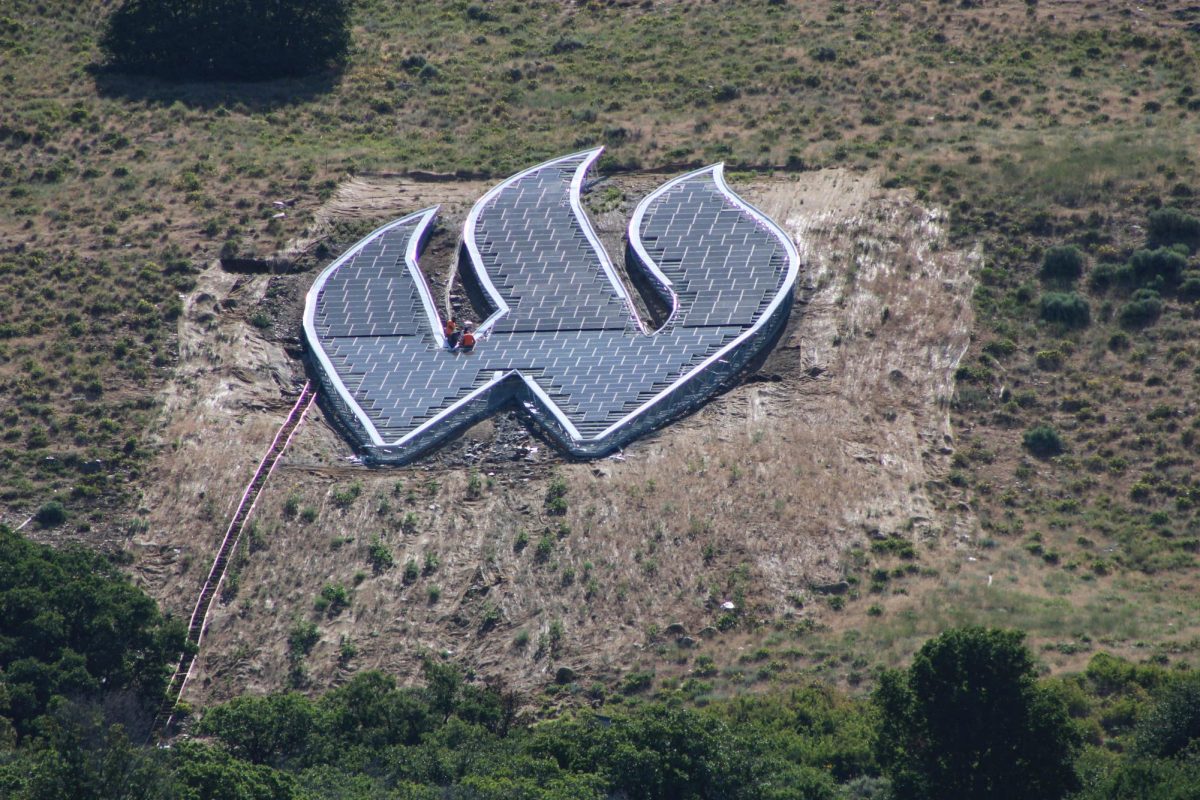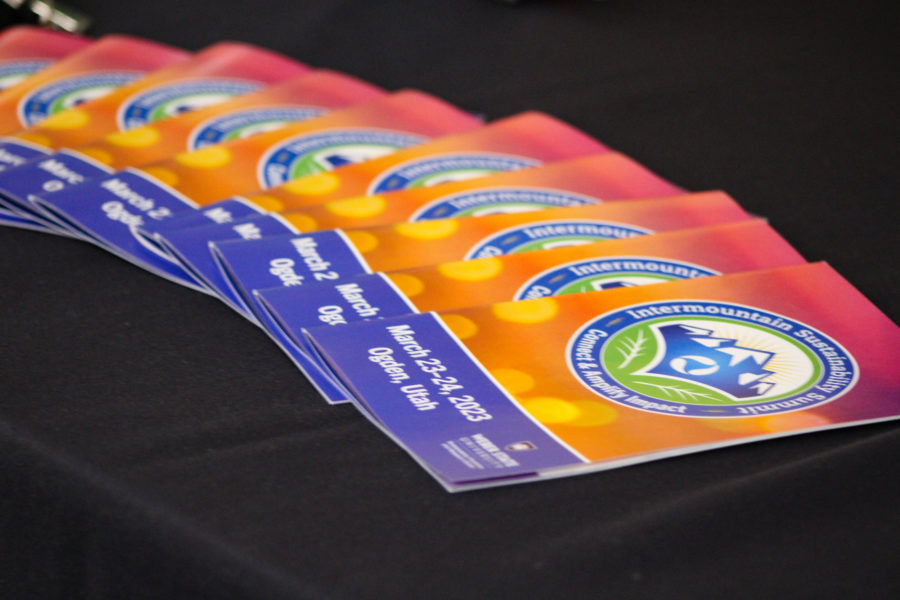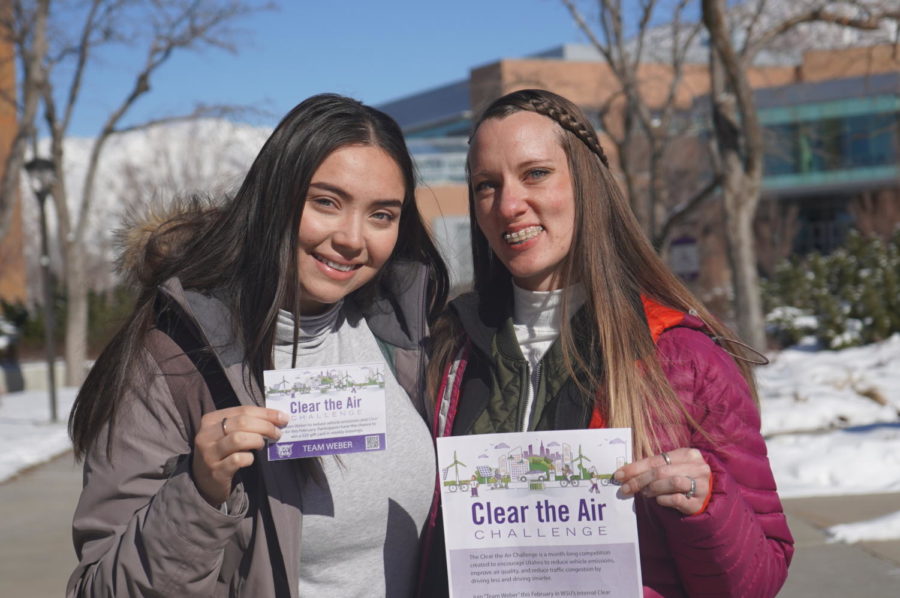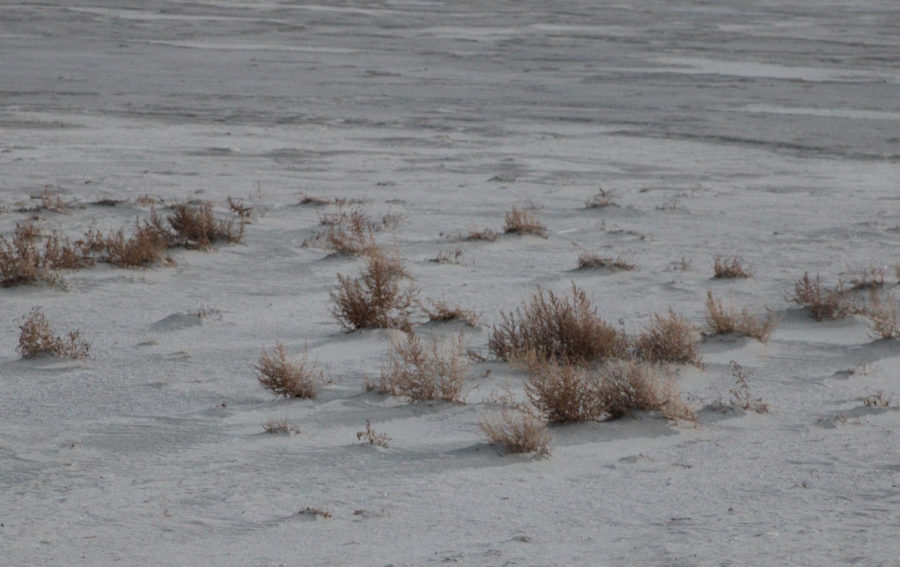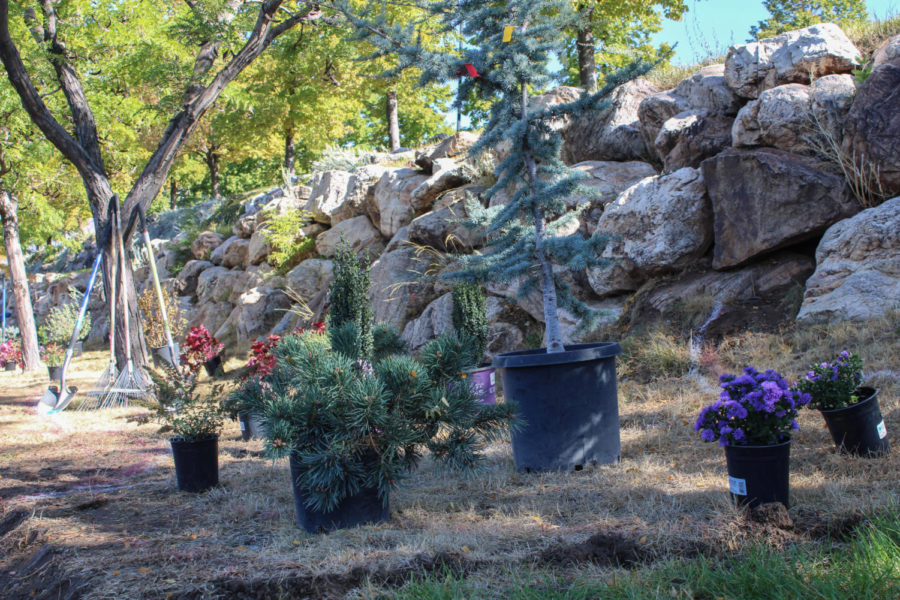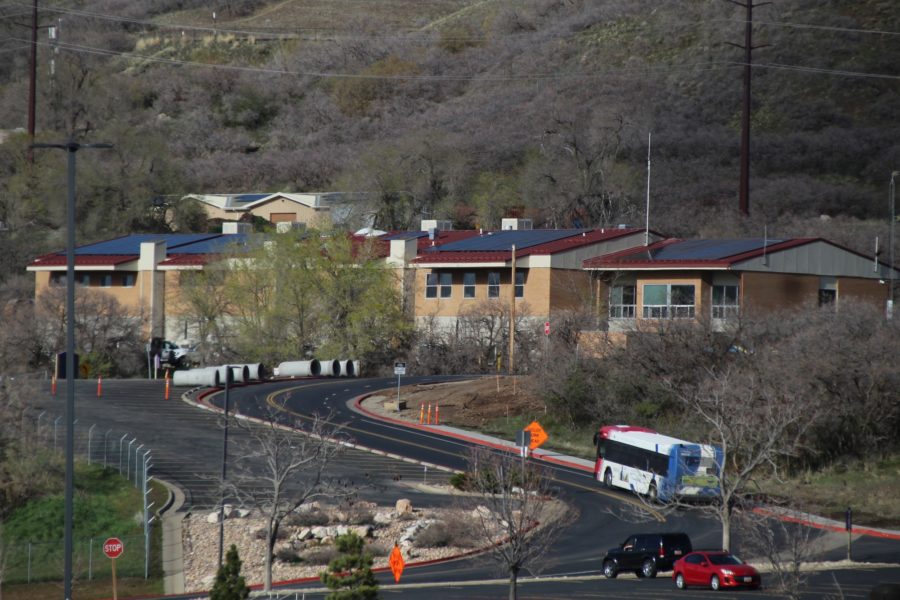
Weber State University has been pulling efforts together to help promote cleaner air in the Ogden City area. The Environmental Issues Committee has organized projects and conducted discussion panels throughout the semester. Its panel discussion on Wednesday concluded the goals and projects finished this semester, also setting future goals and hopeful projects for next semester.
Jennifer Bodine, the sustainability coordinator at WSU, opened the panel, speaking about how WSU has been working toward being carbon-neutral by 2050. The first step began when WSU joined the American College and University Presidents’ Climate Commitment in 2007. Then WSU completed a greenhouse gas inventory in 2008, and adopted and completed the Climate Action Plan in 2009.
Bodine discussed the three different scopes the EIC has divided for the emissions WSU makes each year. The first scope was campus utilities (heat plant, emergency generators and stand-alone building heating systems) with a 24 percent reduction in emissions. The second scope was electricity with a 25 percent reduction in emissions. The third scope was commutes from students and faculty, and airline travel related to the university, with a 4 percent increase.
“We’ve done some commuter surveys and have found the vast majority of folks are traveling to and from the university in single-occupancy vehicles, well over 80 percent,” Bodine said.
Jacob Cain, manager and director of the Energy and Sustainability Office, discussed the money WSU has saved just by changing certain aspects of the university. According to Cain, WSU saved $1,225,353 this year with the added solar panels, LED lights, steam tunnel, and Leadership in Energy and Environmental Design buildings.
“One (thing) I would highly recommend for everyone to do in their homes is (use LED) light,” he said. “Light is a very good way to improve energy and thus reduce emissions.”
Cain also mentioned the Dee Events Center taking first place in the entertainment/culture category in the EPA’s national building competition by changing to LED lights. This inspired other stadiums, such as the Pepsi Stadium and Energy Solutions Arena, to upgrade their lights to LED as well. Cain also talked about how switching to paints with less harsh fumes on the LEED buildings helps contribute to cleaner air.
Bodine then discussed the projects not quite related to air that have been going on at WSU this semester, such as water conservation, waste reduction, recycling promotion and alternative transit for students. WSU Policy 5-49, which prohibits idling for more than two minutes, also passed this year.
Alice Mulder, chair for the EIC, talked about the different majors, minors, certificates and courses students can take to be more aware of the environment. Along with courses, students and faculty are able to win cash awards for sustainability research projects. Two students are awarded $500 and one faculty member is awarded $1,000 each year.
“Even if you don’t decide to take the classes, incorporate sustainability in your other classes,” Mulder said.
Hannah Rice, student coordinator for education and outreach, talked about the projects students have done personally throughout the semester, like the 24 bike racks installed, three bike fix-it stations, seven water bottle refill stations and the Environmental Ambassadors instated last year. The Environmental Ambassadors participated in other projects like Arbor Day, a bike festival and Sustainability Day, and sent students to the Association for the Advancement of Sustainability in Higher Education conference.
Goals for next semester include starting a WSU farmers market and a university bicycle plan, helping to promote green purchasing, and identifying ways WSU can save energy and water and reduce waste.
Future events include “Green the Stadium” versus Utah State University on Nov. 26 and the Intermountain Sustainability Summit with guest speaker Sally Jewell, secretary of the interior, March 6-7. More solar panels are scheduled to be installed at the Davis campus as well. Students and faculty are also welcome to see the air exhibit in the Shepherd Union Bridge Gallery.
“We want to set similar goals for waste and water and all that stuff, so that we’re consistently reducing our footprint, if you will,” Bodine said.



